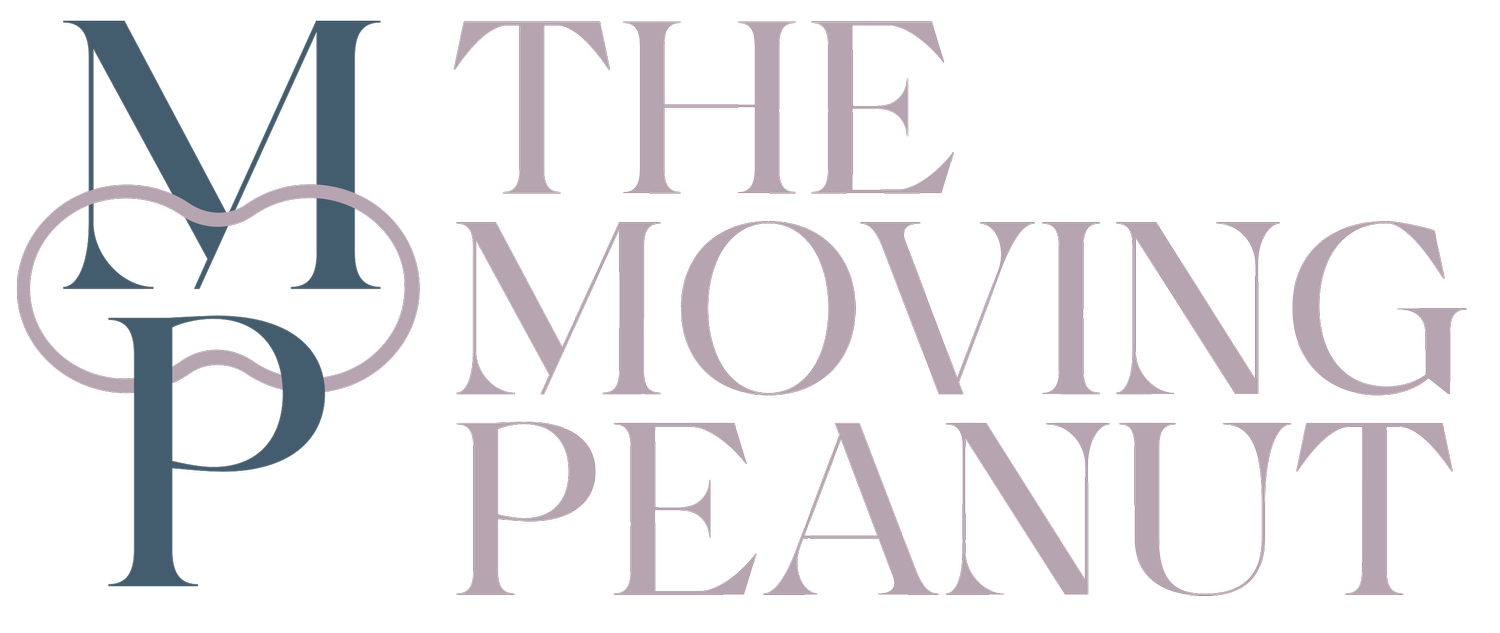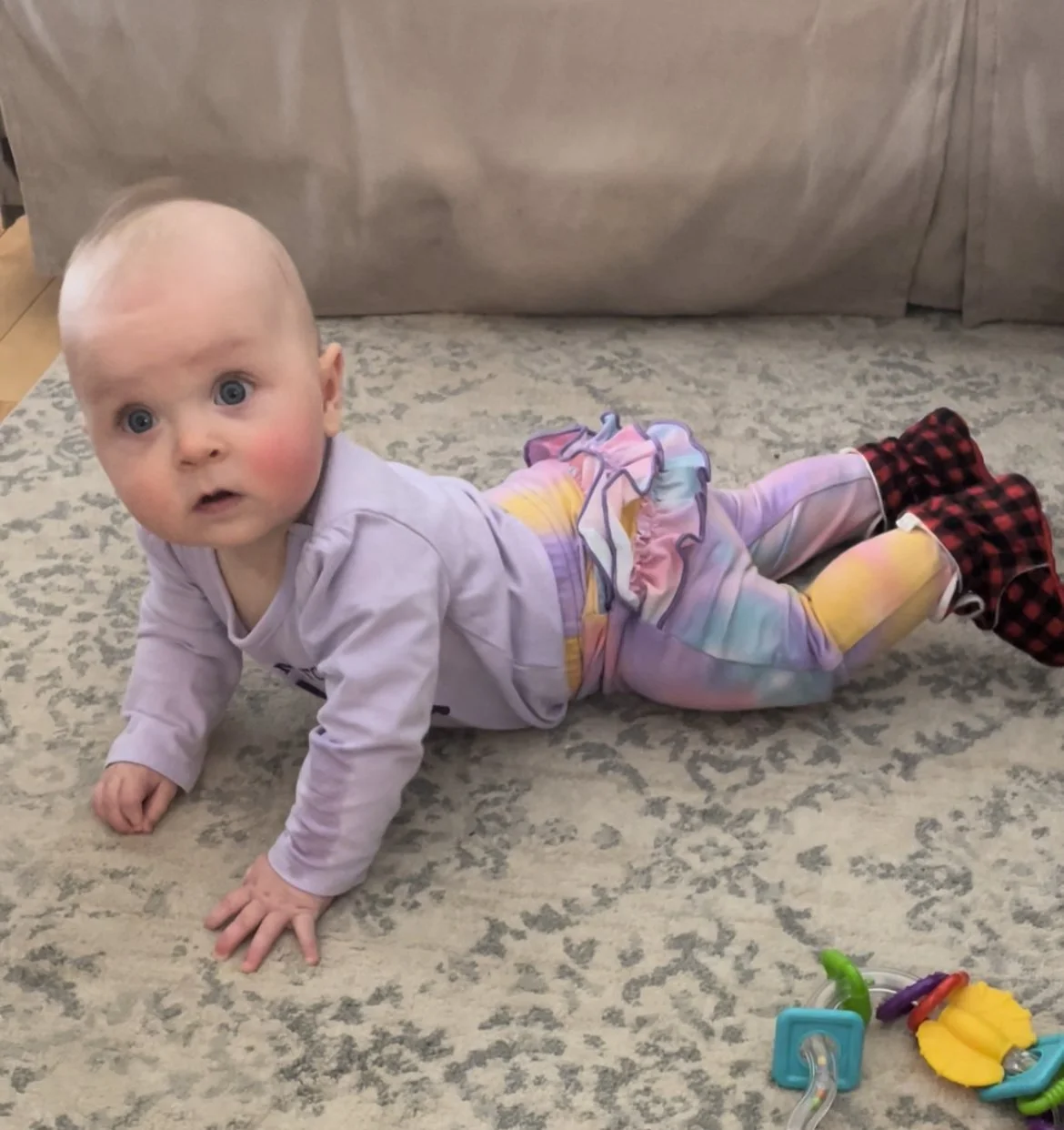Why Rolling Is So Important for Your Baby’s Development
Written By: Dr. Alli Chisholm, PT, DPT
Disclaimer: This post may contain affiliate links. If you purchase through my links, I may earn a small commission at no extra cost to you. I only recommend products I personally use and love with my own family and clients.
That First Roll: The Moment Everything Changes
You look away for a second and suddenly your baby isn’t where you left them.
That first roll always feels like magic. It’s often the first time your little one realizes they can move on their own. Rolling isn’t just a fun trick — it’s the start of independence, curiosity, and so many other big milestones that follow.
Most babies begin to roll from belly to back around three to five months, and from back to belly around four to six months. But every baby’s timeline looks a little different. Some start early, others take their time, and both are completely okay. The most important thing is understanding why rolling matters and how you can help your baby practice it in simple, playful ways.
If tummy time has been a struggle, check out my free guide How to Help Your 0-6 Month Old LOVE Tummy Time (Even If They Cry Every Time) for gentle ideas to make it easier.
What Rolling Really Means
Rolling is how your baby learns to change positions — from back to belly and from belly to back. It’s a beautifully coordinated movement that calls on the neck, trunk, and hips to work together.
This early skill helps your baby practice:
Shifting their weight and finding balance
Strengthening their core
Using both sides of their body together
Planning how to move from one place to another
If your baby seems to prefer rolling one way (belly to back to the left, but not the right, for example) or not at all yet, it may just be that one side feels tighter or stronger. That’s something I often support families with in my Virtual Pediatric Wellness Assessments where we take a closer look at movement patterns and find ways to bring balance back to both sides.
Eight Reasons Rolling Is So Important
Rolling is so much more than movement. It’s full-body development, sensory learning, and brain growth all happening at once.
1. It encourages independence
This is the first time your baby gets to change their own position. It builds confidence and curiosity, showing them they can explore the world in a new way.
2. It opens up exploration
Once babies can roll, they start noticing textures, toys, and people around them in a whole new light. It’s how they begin connecting with their environment.
3. It helps with transitions
Rolling teaches babies how to move smoothly between positions, which they’ll later use for sitting, crawling, and standing.
4. It builds strength
Every roll strengthens the neck, back, and abdominals — the muscles your baby needs for sitting up and moving on their own.
While muscle tone doesn’t equate to strength, questions around muscle tone can be a big concern when it comes to your little meeting their milestones, including rolling.
5. It connects both sides of the brain
When babies roll, they’re using both sides of their body in sync, which supports later coordination for crawling, writing, and reading.
6. It grows spatial awareness and problem-solving
Each time your baby rolls, they see the world from a new angle and learn to adjust to obstacles they hadn’t noticed before.
7. It supports digestion and comfort
That gentle twisting helps stimulate the digestive system and relieve gas or constipation. It’s one reason babies often seem happier after some floor play.
Speaking of digestion, if your baby struggles with reflux, improve your baby’s comfort and symptoms by checking out this post.
8. It teaches motor planning
When your baby sees a toy and rolls to reach it, they’re practicing problem-solving and learning how to plan a movement step-by-step — essential for all future skills.
How to Support Rolling at Home
You don’t need fancy equipment or long practice sessions — just a safe space, your attention, and a few simple setups.
Create a supportive play area
Give your baby plenty of room to move freely. A large play mat or blanket on the floor is perfect. Limit containers like swings or bouncers when you can so your baby has more opportunities to explore.
Encourage belly-to-back rolls
Place a small towel or blanket roll under one hip to help your baby start the movement. Use a light-up toy or mirror to get their attention and slowly guide it toward the side you want them to roll to.
Pro Tip: Wherever your baby’s eyes go, their body follows. Practicing visual tracking with a motivating toy like this one to help the rest of their body learn the movement.
Our baby tucking her bottom arm underneath after tummy time to complete a roll belly to back.
Build strength for back-to-belly rolls
This direction takes more work. First, try folding a small blanket and placing it underneath your baby’s hips while on their back to encourage them to reach for their toes. This builds up their core strength in preparation for rolling back to belly!
Pro Tip: Hold the motivating toy near your baby’s belly to encourage a little chin tuck while in side lying. This activates deep neck and core muscles — key for head control and, in turn, bringing the body fully over onto the belly.
Before babies can roll back to belly, they have to be able to first reach for their toes while on their back!
When to Reach Out for Support
Every baby develops on their own timeline, but a few signs are worth paying attention to:
Your baby arches backward instead of curling forward when trying to roll back to belly
They only roll in one direction (for example, left but not right)
They haven’t rolled from back to belly or belly to back by eight months
If you notice any of these, don’t panic. They’re simply signs your baby could use a bit of extra guidance. I often help families identify what’s going on and create a plan that fits their baby’s needs.
If you’re unsure whether your baby’s rolling looks typical, schedule a virtual pediatric wellness assessment where we’ll look at your baby’s movement together and come up with next steps.
Rolling and Sleep Safety
Once your baby can roll both directions on their own, it’s safe for them to sleep in the position they choose. You’ll want to stop swaddling at that point and keep the sleep space clear and firm.
My favorite sleep slack to use that allows for unrestricted use and movement of the arms post-swaddling is the Zippadee Zip.
Rolling Is Just the Beginning
Rolling opens the door to sitting, crawling, and all the exciting exploration that comes next. It’s the foundation for your baby’s confidence and coordination, and it all starts with a simple twist of their little body.
Celebrate the wobbly attempts, the half-rolls, and even the fusses. Every bit of effort means your baby’s brain and body are learning something new.



